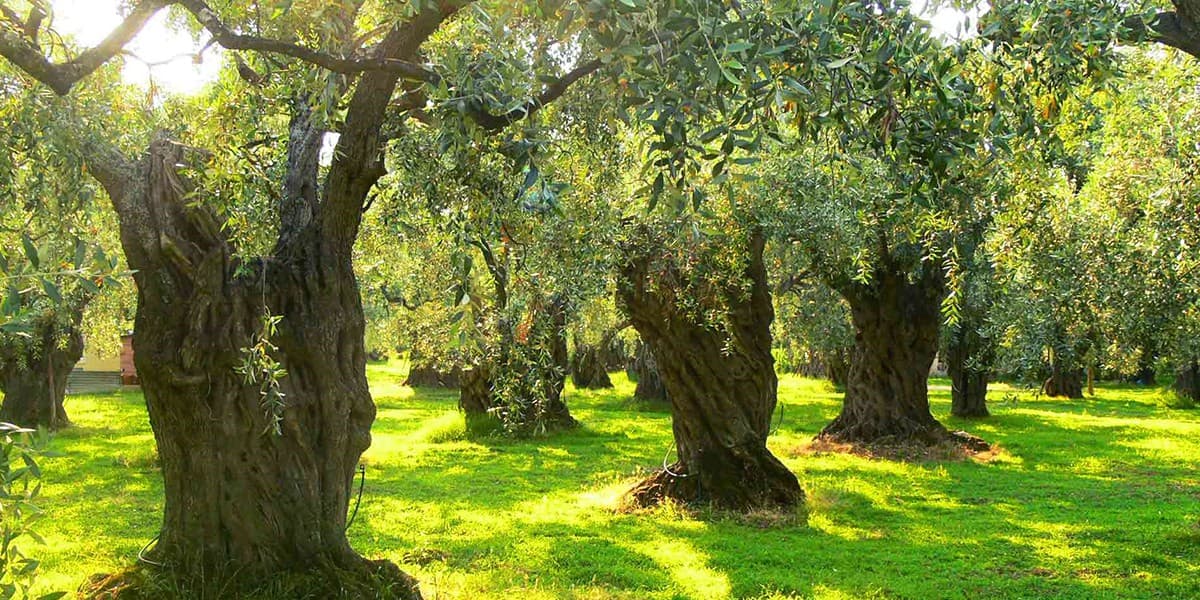
Olive Ring Spot Disease
The fungus spends the winter on the dried leaves that fall to the ground or the diseased leaves on the tree. Transmission occurs by spores. The flight of spores is greatest in the spring, and it takes between 30–61 days for the symptoms to appear. The optimum growth temperatures of the agent are 18–20°C. It cannot grow below 9°C and above 30°C. Regions that are generally rainy in the spring and autumn periods are suitable for the development of the disease. Olive groves, which are not well ventilated, sun-drenched, frequently planted and unpruned, are suitable places for disease development.
Verticillium Wilt in Olive Trees
The disease agent is a soil-borne fungus. The disease agent usually spends the winter in the soil and on plant parts. The agent is also found in the leaves of sick trees, and the shedding of these leaves causes an increase in the amount of spreading in the soil. Although the disease agent survives in soils at low temperatures, it develops better at 25–28°C. The fungus can survive in the soil for more than 10 years. The disease is mostly seen in the olive groves established in the base areas, where cotton or vegetable cultivation was carried out in previous years. The spread of the disease in olive groves generally occurs in the form of carrying the contaminated soil to the clean side with irrigation water and soil cultivation. After the fungus enters the root of susceptible plants, it clogs the vascular bundles and prevents water transmission from the root to the leaves. This causes wilting symptoms in the plant (Figure 4). Usually, disease symptoms in flowers appear before leaf symptoms appear. If infection occurs at the beginning of the flowering period, some of the flowers may shed.
Olive Branch Cancer Disease
The disease agent is bacteria and the optimum growth temperature is 25-26°C, maximum 34-35°C. The minimum temperature requirement is 12°C. The bacterium is found in cream-green living tumors and warts. Tumors and warts that cause new contaminations take a dark brown, cracked and sunken appearance with the effect of excessive light and heat. In such tumors and warts, the bacteria causing the disease dies and cannot infect. Bacteria found in live tumors and warts in cream-green color come to the surface of fresh tumors and warts in humid and rainy weather. It is easily spread from here by rain water, wind and insects. Pole harvesting and dish cuttings also contribute to the spread of the disease. Olive branch cancer is seen in the form of tumors and warts in different sizes on the trunk, branches and shoots of the olive tree (Figure 5). The size of these tumors is related to the size of the wounds where the agent entered. Warts that occur in wounds caused by the shedding of leaves, flowers and fruits on annual shoots are small and rounded. As a result of intense contamination on young shoots, leaves, flowers and fruits fall and bare is seen. Tumors formed due to pole hit, hail wound and pruning errors during harvest surround the branch along the cracks.
Olive Fly
The olive fly is the main pest of olives. It is found in almost all olive fields in our country. Adult, 4-6 mm long, bright brown and honey colored. The larva is legless and transparent, white in color. The head is thin, the body thickens backwards, it has a conical cylindrical appearance. The pupa is brown and barrel-shaped, measuring 3.8-5.0 mm in length and 1.7-2.0 mm in width. The olive fly mostly spends the winter as pupae at a depth of 2-5 cm in the soil or as an adult in olive groves and heaths. Overwintering adults begin to emerge when the soil temperature reaches 10°C, and the density generally increases from June. First of all, he has reached the maturity to hit; They prefer large, shiny and oily olive fruits. The place where the egg is laid on the fruit turns dark brown after a day, this is called "knock"
The larva that emerges from the egg is fed by opening galleries in the fruit flesh. Thus, it causes the fruits to rot and fall, decrease the amount of olive oil, and partially increase the acidity of the oil. Especially in table olives, its damage is more important.
